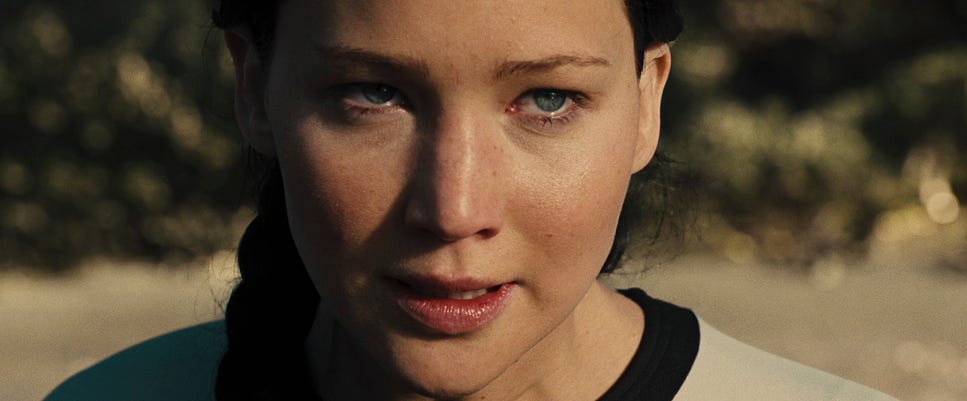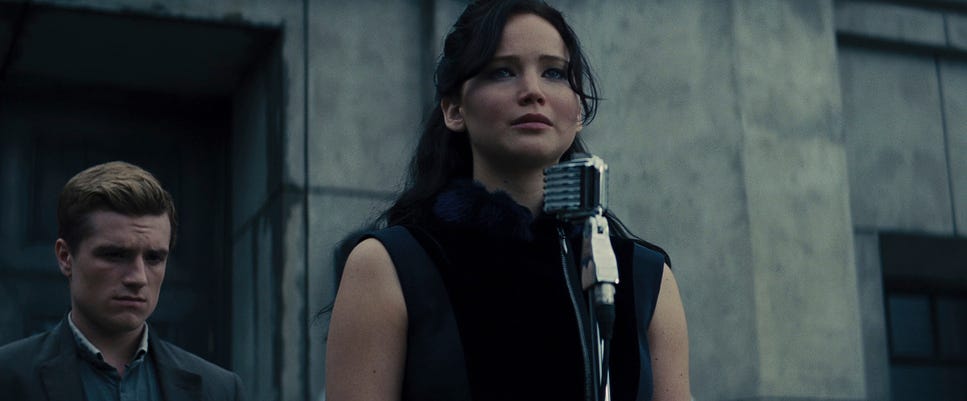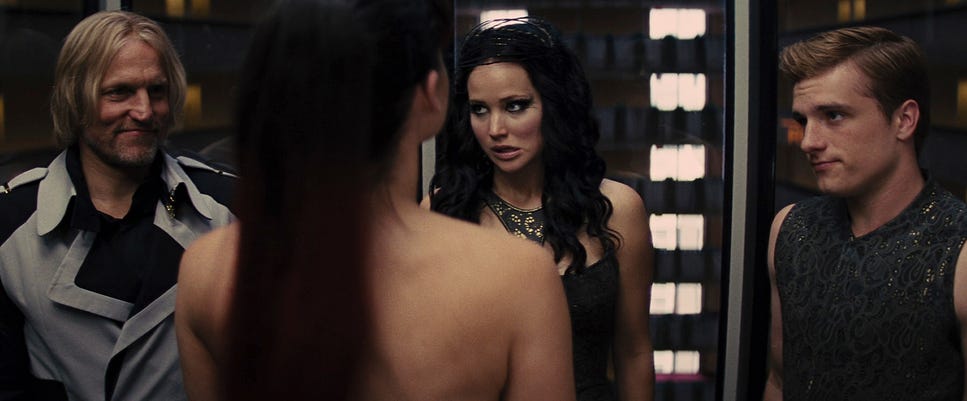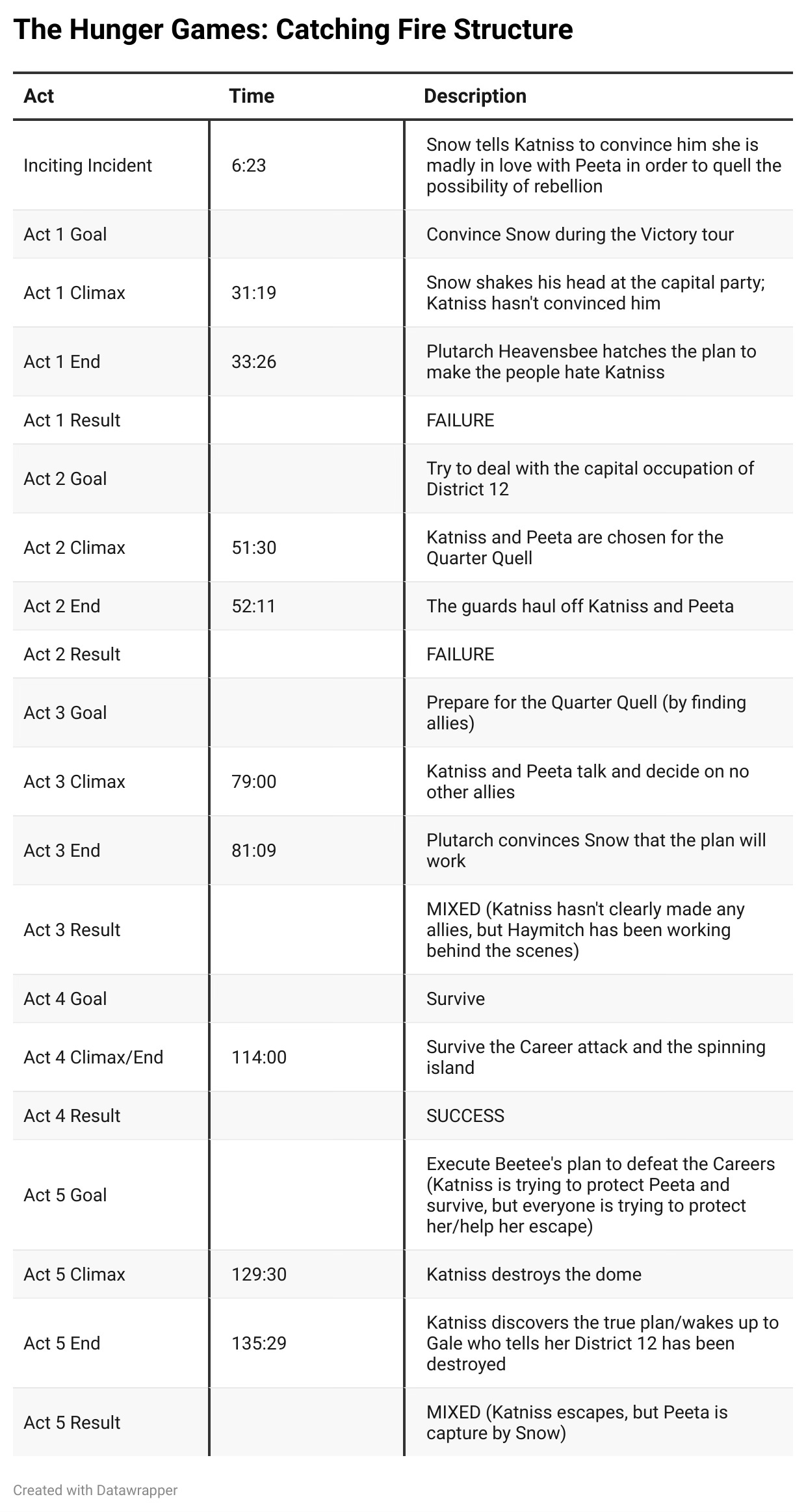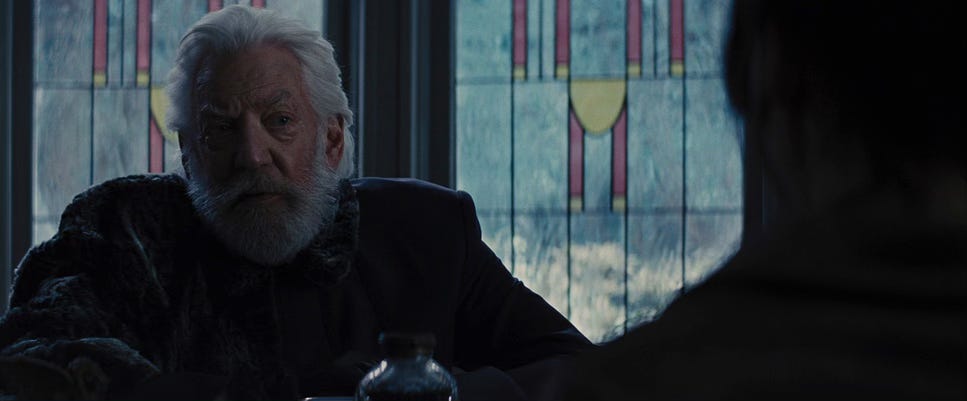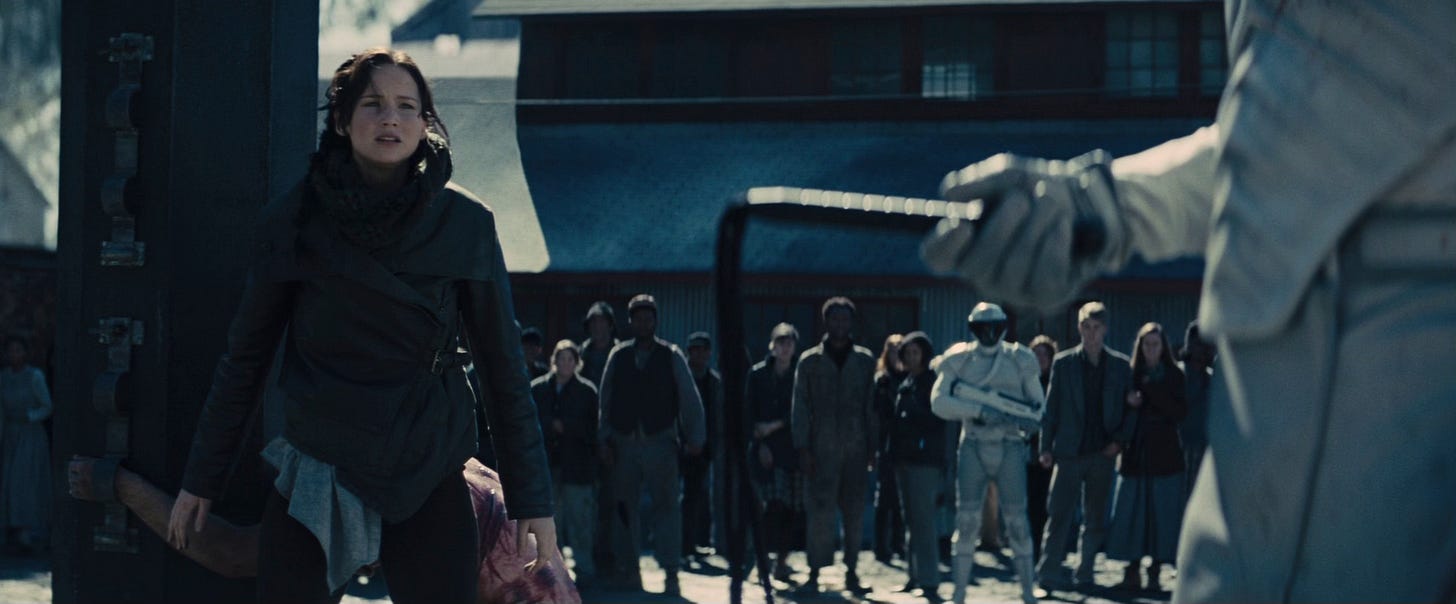The Hunger Games: Catching Fire Structure Breakdown
As I mentioned in my original Hunger Games post, the Hunger Games franchise is one of my favorites, so I’ll be posting breakdowns of all the movies over the next couple of months. Catching Fire is especially interesting because it mostly tries to repeat the formula that made the original so popular, but must also give the audience something new, while at the same time developing the shift toward rebellion that the franchise focuses on in the final two films.
As always, these breakdowns contain SPOILERS, and are only recommended if you've already seen the movie. You can check my introduction to these breakdowns, to get an overview of my process and philosophy.
Feel free to let me know what you think in the comments below!
The Basics
Director: Francis Lawrence
Writers: Simon Beaufoy, Michael Arndt, Suzanne Collins
Release Date: 2013
Runtime: 146 Minutes
IMDB: https://www.imdb.com/title/tt1951264/?ref
Movie Level Goals
Protagonist: Katniss
External: Save Peeta (and herself, if possible)
SUCCESS | FAILURE | MIXED
Internal Goal: Trust others
SUCCESS | FAILURE | MIXED
Goal Relationship: Seems like Internal Goal leads to External Goal, but they’re rather independent since Katniss is unaware of the plan to save her and make her the Mockingjay
Three Observations
Feel free to watch the video or read the (slightly edited) transcript below.
Observation #1: The Original Versus The Sequel
The first observation is a comparison between the original Hunger Games and Catching Fire. Both of them have similar structures, but with Catching Fire being 146 minutes long, we have an interesting five-act structure, which is pretty unusual in most movies until we start getting into the 2.5-hour to 3-hour length.
The setup is pretty similar. In the original Hunger Games, Act One is the setup of the world. Act Two is the preparation as Katniss and Peeta get ready for the games. Then, Acts Three and Four are the games themselves.
Catching Fire is a interesting because Acts One and Two both serve as setup, which I think is a more interesting than we might expect.
The first goal of Act One is for Katniss to convince President Snow that she and Peeta are in a committed relationship. We see at the end of the climax, when they go to the big party at the mansion, that Snow is not convinced. He shakes his head at Katniss, and Katniss has failed at her goal.
What really becomes interesting in this setup is Act Two, which I'll discuss more in a minute. But the Act Two goal is really to try to deal with the Capitol occupation of District 12.
Finally, we have the climax of Katniss and Peeta being chosen for the Quarter Quell. So rather than having the one-act setup of The Hunger Games, we actually have both Acts One and Two functioning as setups for Catching Fire. From there, the rest of the structure is pretty similar to the original.
Act Three is the preparation for the games, just like Act Two had been preparation in The Hunger Games. Then, Acts Four and Five of Catching Fire are basically the games themselves, just like we saw in Acts Three and Four of the original Hunger Games, where we see the games play out.
Observation #2: The Short Second Act
We usually do not have two setup acts—we usually only have one. Now, we could try to claim that this is one long setup act, but it would be running at 52 minutes, which would be a really long First Act.
We also have a pretty strong climax around the 31-minute mark when Snow does let Katniss know that their attempts at faking a romance have failed.
So, what we end up with is a pretty short Act Two that ramps up the conflict with the Capitol and tries to get us pretty quickly to why we're here, which is the games. But of course, the games are going to be a little different than they had been before.
We have Act One ending around the 33.5-minute mark, where Plutarch Heavensbee hatches the plan to make people hate Katniss. Then in Act Two, we have Snow's forces coming into District 12, and we've got Katniss, Peeta, and Gale all trying to deal with the occupation and everything that's going on.
This leads to the famous scene where Gale stops one of the soldiers of Snow's army from attacking someone, and he ends up getting strapped to the whipping post. Then, both Katniss and Peeta eventually come out to try to stop the whipping.
The Act 2 climax happens right around the 51-minute mark, where we have Katniss and Peeta's names chosen for the Quarter Quell. And of course, they're going to have to go back and compete in the games again.
This second act starts around the 33.5-minute mark and runs to 52 minutes, so it's not even 20 minutes. It's a very short act. It's about as short an act as you'll generally see in a movie.
But it is an important act, I think, because we don't have our normal setup. We actually have a pretty complex setup, which is interesting because this is a sequel, and we ought to be able to set things up pretty quickly.
But the filmmakers and the original novel don't want to just have a repeat of the same games. And so, we have to do this extra work in order to set up the Quarter Quell and to set up the fact that Katniss and Peeta are going to have to compete again in The Hunger Games.
Observation #3: The Protagonist and the Final Two Acts
In a lot of movies, like The Avengers, we have what's called a mass protagonist, where we have an entire group of characters who all share the same act goal or movie-level goal.
And when we get into the games we've got Katniss and Peeta, and then, of course, we've got some of the other previous winners of the games who form a team that are all supposed to be working towards the same goal of survival.
And so, they do seem like they're acting as a mass protagonist.
But what's interesting about this is that, really, within this structure, we have a lot of complications.
First of all, Katniss does not want to partner with all of the other previous victors—she wants to save Peeta. That is her goal—to save Peeta.
But everyone else, including Peeta, has the goal of saving Katniss, so that she can become the Mockingjay, the face of the revolution. And that will launch us into the third of The Hunger Games movies.
So, it's interesting that, on the surface, Katniss partly thinks that they have a general goal of partnering and surviving for a while. But all along, she has her own goal, which is to save Peeta.
And she's really working against the goal that all the other characters around her have.
So, what we end up with is a misleading mass protagonist situation, where on one level, it seems like everyone is working towards the same thing—which is to survive somehow, even though there's only supposed to be one winner.


